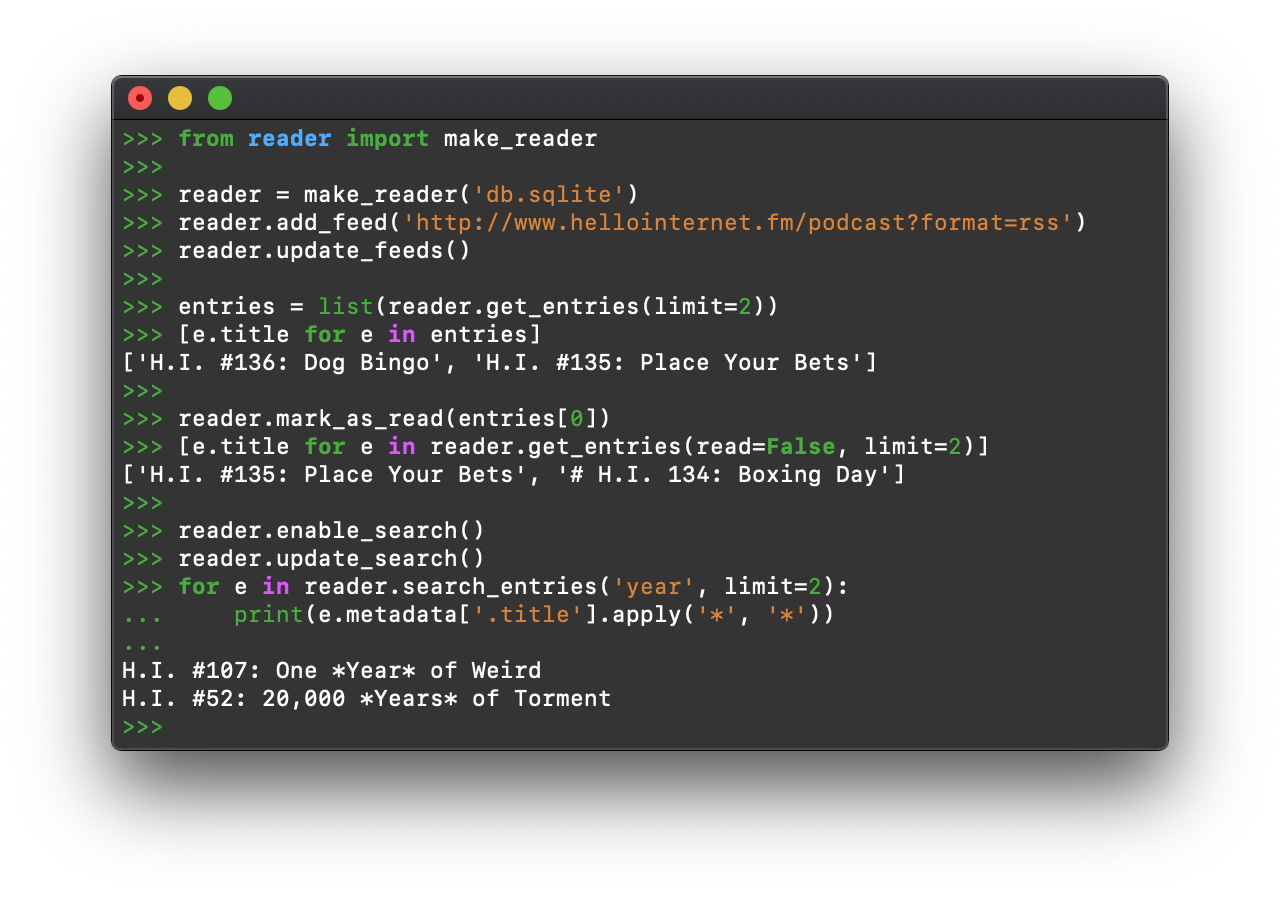reader 2.5 released – usage statistics
October 2021 ∙ three minute read ∙
Hi there!
I'm happy to announce version 2.5 of reader, a Python feed reader library.
What's new? #
Here are the most important changes since reader 2.0.
Search enabled by default #
Full-text search works out of the box: no extra dependencies, no setup needed.
Statistics #
There are now statistics on feed and user activity, to give you a better understanding of how you consume content.
First, you can get the average number of entries per day
for the last 1, 3, 12 months,
so you know how often a feed publishes new entries,
and how that changed over time –
think sparklines: 36 entries ▄▃▁ (4.0, 2.0, 0.6).
Second, reader records the time when an entry was last marked as read or important. This will allow you to see how you engage with new entries – I'm still working on how to translate this data into a useful summary.
A nice side-effect of knowing when entry flags changed is that now it's possible to tell if an entry was explicitly marked as unimportant (new entries are unimportant by default).
Improved duplicate handling #
Duplicate handling got significantly better:
- False negatives are reduced by using approximate string matching and heuristics to detect truncated content.
- You can trigger entry deduplication manually,
for the existing entries of a feed
– just add the
.reader.dedupe.oncetag to the feed, and wait for the next update. Also, you can deduplicate entries by title alone, ignoring content. - Old duplicates are deleted instead of marked as read/unimportant.
User-added entries #
You can now add entries to existing feeds. This is useful when you want to keep track of an article that is not in the feed anymore because it "fell off the end".
It can also be used to build bookmarking / read later functionality similar to that of Tiny Tiny RSS; extracting content from arbitrary pages would be pretty helpful here.
New Python versions #
reader now supports Python 3.10 and PyPy 3.8.
Other changes #
Aside from the changes mentioned above, I added a new plugin hook, added a few convenience methods and attributes, updated the web application and plugins to take advantage of the new features, and fixed a few minor bugs.
See the changelog for details.
What is reader? #
reader takes care of the core functionality required by a feed reader, so you can focus on what makes yours different.
 reader allows you to:
reader allows you to:
- retrieve, store, and manage Atom, RSS, and JSON feeds
- mark entries as read or important
- add tags and metadata to feeds
- filter feeds and articles
- full-text search articles
- get statistics on feed and user activity
- write plugins to extend its functionality
...all these with:
- a stable, clearly documented API
- excellent test coverage
- fully typed Python
To find out more, check out the GitHub repo and the docs, or give the tutorial a try.
Why use a feed reader library? #
Have you been unhappy with existing feed readers and wanted to make your own, but:
- never knew where to start?
- it seemed like too much work?
- you don't like writing backend code?
Are you already working with feedparser, but:
- want an easier way to store, filter, sort and search feeds and entries?
- want to get back type-annotated objects instead of dicts?
- want to restrict or deny file-system access?
- want to change the way feeds are retrieved by using Requests?
- want to also support JSON Feed?
... while still supporting all the feed types feedparser does?
If you answered yes to any of the above, reader can help.
Why make your own feed reader? #
So you can:
- have full control over your data
- control what features it has or doesn't have
- decide how much you pay for it
- make sure it doesn't get closed while you're still using it
- really, it's easier than you think
Obviously, this may not be your cup of tea, but if it is, reader can help.